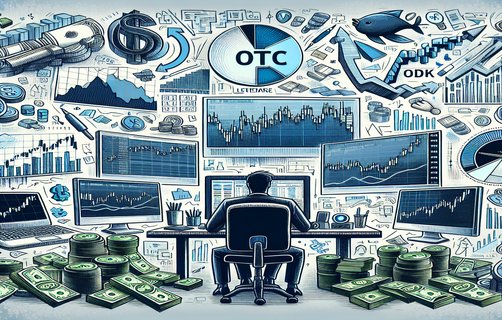
Ciphered Futures: AI's Tactical Dance in the Modern Workplace
In a realm where chance meets calculated strategy—reminiscent of a high-stakes session at keno—businesses are witnessing a revolutionary transformation. The dynamic interplay between artificial intelligence and human ingenuity is challenging conventional practices in ways as unpredictable as unstable variance in bonus wagering.
Unveiling the New Paradigm
With the acceleration of AI integration, workplaces are experiencing an evolution that redefines profit control and balance betting in a modern context. Enterprise leaders, much like seasoned advantageplay strategists, find themselves at a crossroads where technology not only complements human talent but also disrupts established norms. AI-powered systems, once tools of simple automation, now offer intricate solutions that echo the sophistication found in bonus wagering systems, enabling dynamic profit control while enhancing operational efficiency.
Opportunities and Challenges of Automation
Experts from top research institutions highlight that automation introduces remarkable opportunities alongside certain risks. On the one hand, efficiency and accuracy have improved markedly; tasks that previously demanded manual scrutiny now advance at a pace akin to balance betting in rapid gaming environments. On the other hand, these innovations provoke fears of job redundancies and an over-reliance on technology that might lead to an unstable variance in decision-making processes.

Expert Opinions and Research Highlights
Dr. Elaine Morrison, a leading researcher in AI ethics, advises, 'Organizations must harness AI as a tool for intelligent decision-making rather than as a substitute for human wisdom.' Furthermore, industry experts observe that, much like in the realm of keno where chance and strategy merge, the best outcomes arise when human oversight meets data-driven intelligence. This balanced approach ensures that profit control remains both dynamic and equitable while mitigating risks associated with fully automated systems.

Interactive Reflections
As you ponder the future of AI in your professional sphere, consider these questions to gauge your sentiments and ideas:
- Do you believe AI will create more job opportunities than it displaces?
- How should organizations balance human intuition and automated decision-making?
- What strategies can improve profit control while engaging with advanced AI systems?
- In what ways can bonus wagering concepts inspire risk management in business?
Frequently Asked Questions
Q1: How can AI enhance efficiency in the workplace?
A: AI can streamline operations, automate repetitive tasks, and improve decision-making with data-driven insights, much like managing balancebetting in uncertain environments.
Q2: What measures can be taken to mitigate job displacement due to AI?
A: Organizations can invest in upskilling, encourage human oversight, and implement transition strategies to nurture a symbiotic relationship between technology and human expertise.
Q3: How do concepts like keno and bonus wagering relate to AI strategy?
A: They serve as metaphors for the balance of chance and control, illustrating that strategic decision-making in AI requires both calculated risk and proactive management.


Comments
Alex
This article brilliantly merges the unpredictability of gaming with the strategic advances in AI. It made me rethink the future of work!
小明
The analogy between bonus wagering and profit control is refreshing. It really highlights the complexity of integrating AI in business.
Sophie
I appreciate the expert insights. Dr. Morrison's comments especially resonated with me - a balanced approach is clearly key.
Li Wei
Every section was a deep dive into AI's impact on the workplace. The interactive questions got me thinking about my future role in this tech evolution.
John
Great read! The structure and seamless flow from keno strategies to automation challenges kept me engaged throughout.
王芳
I love how the article connects seemingly unrelated concepts into a coherent narrative about modern technological advances.